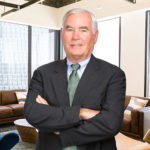Cityview examines seven key components for staying ahead of the curve.
September 16, 2019

While some of the features sought after by renters are consistent across age groups, millennial tenants are leading the way with demand for more creative, community-building amenities at multifamily communities. The largest generation in the U.S., millennials are pushing multifamily owners and property managers to step up their offerings, or get left behind by the competition. By understanding what the younger renter demographic really wants, multifamily developers, investors, and builders can stay ahead of the curve and improve tenant attraction and retention.
Here are some of the key components Cityview has identified as priorities for millennial tenants:
1. Creative amenities: Fitness centers, resort-style pools, and clubhouses have become standard at luxury multifamily developments, so developers and property managers need to take amenities one step further to truly stand out. Unique offerings such as speakeasies and virtual reality rooms appeal to younger renters and foster resident interaction. Rock-climbing walls, roof decks with Airstreams, and rooftop dog parks create a fun atmosphere that caters to the younger demographic’s always-on lifestyle. As we’ve learned with some of the community spaces in our developments, “Instagrammable” locations have the added benefit of providing free promotion for your apartment community, which ultimately helps attract more renters.
2. Urban, walkable locations: The younger generation prefers to live in more urban areas that are located near vibrant culture and nightlife, educational offerings, and job centers. Walkability and transit accessibility are also important, as millennials increasingly want to ditch the car commute and be more involved in the communities in which they live, work, and play.
3. Health and well-being: Millennials are no stranger to anxiety and stress, so it’s important that their living environment promotes health, tranquility, and a general sense of well-being. When it comes to fitness, a basic workout room isn’t sufficient anymore. To appeal to younger renters, communities should offer a wide range of options. From HIIT to doga (dog yoga) to mommy and me workout classes, the offerings should be unique and tailored to the community’s demographic. To promote relaxation, Cityview likes to incorporate zen gardens, hammocks, and other areas that encourage residents to unwind. The built environment itself should also promote wellness, utilizing natural light, clean air, and greenery to improve residents’ day-to-day lives.
Going beyond community amenities, bike share programs, transit maps, and other offerings to help residents easily navigate the surrounding area without getting into a car are in high demand.
4. Co-working and flexible spaces: As more people work from home, freelance, and have flexibility in their work schedules, apartment communities can help provide much-needed co-working spaces. To make your offerings as functional as possible, it’s important to offer a wide variety of options that accommodate workers’ various needs and tasks throughout the day. Private rooms where they can host an important client meeting or take a call are often a necessity, but so are more casual environments that spark creativity and collaboration. It may sound prohibitive to provide this much space for tenants to work in, but that’s why dual-use spaces are so important. A lounge area can serve as a speakeasy by night and co-working space by day. At one of Cityview’s upcoming multifamily projects in Culver City, Calif., we are installing an Airstream travel trailer onto the roof that can be used as a workspace during the day and a social gathering hub in the evening. The more uses you can get out of these spaces, the more residents will benefit.
5. Connectivity: To facilitate co-working, on-demand entertainment, and 24/7 social connectivity, fast Wi-Fi is nonnegotiable for younger renters. Whether a renter is hopping onto a Skype meeting by the pool, watching Netflix on the elliptical, or getting food delivered for a rooftop get-together, a tech-enabled environment throughout all areas of the community is key.
6. Customized offerings: While millennials do have some shared qualities, it doesn’t mean that they are all created alike. In order to drill down what younger renters in each of our project’s submarkets want, Cityview conducts in-depth demographic research and holds focus groups that help gather valuable intelligence.
For example, at The Pearl on Wilshire, a 346-unit, mixed-use project in Los Angeles’ Koreatown, Cityview discovered that renters were willing to sacrifice personal living space for more extensive amenities. Based on this unique insight, 350- to 600-square-foot studios and one-bedrooms were incorporated into the building’s design. Alternatively, at the 240-unit Baker Block project in Costa Mesa, younger renters preferred larger, two-bedroom layouts to accommodate space for a roommate.
While very different, both solutions made the communities more affordable and attractive for tenants. By investing in the submarket research up front, we were able to achieve fast lease-up rates and strong resident retention and satisfaction in both communities.
7. A sense of community: Offering resident events and services that foster a sense of community is one of the most important parts of catering to the younger renter demographic. Tenants want to socialize, connect with others, and complete their to-do lists without having to leave their apartment complex, so it’s important that there is a wide variety of offerings that are highly tailored to them. In communities that have a lot of families, events that incorporate children are in high demand. Karaoke competitions may be popular in certain areas, while other demographics may prefer cooking classes or wine tasting.
When it comes to services, you can connect residents to dog walkers, dry cleaning, personal trainers, and other providers directly through your resident portal or app, ensuring strong engagement between the community and residents.
All of these considerations are key to unlocking what millennial renters will respond to and ensuring the multifamily investors, developers, builders, and residents get the most value out of a multifamily community.
Author: Melissa Bartolucci Delgado
Originally published on Multifamily Executive


























